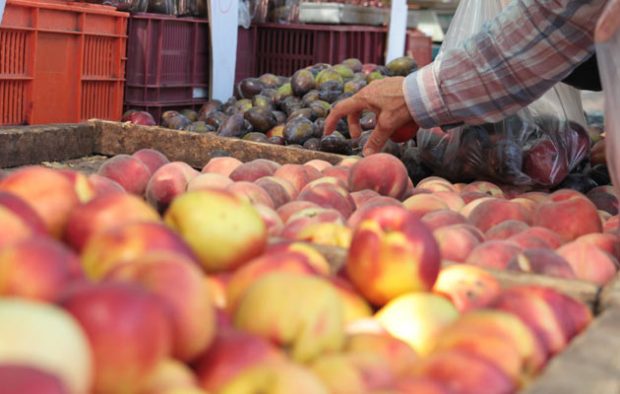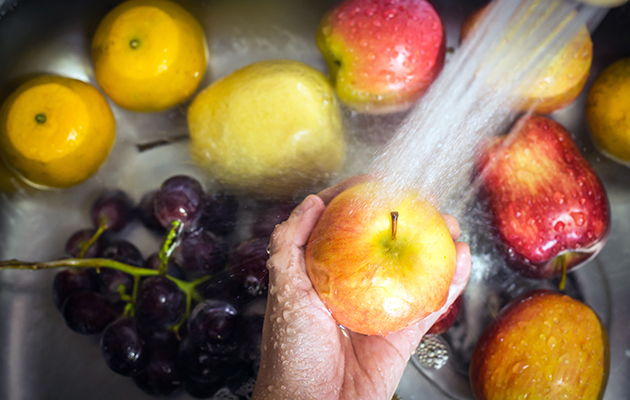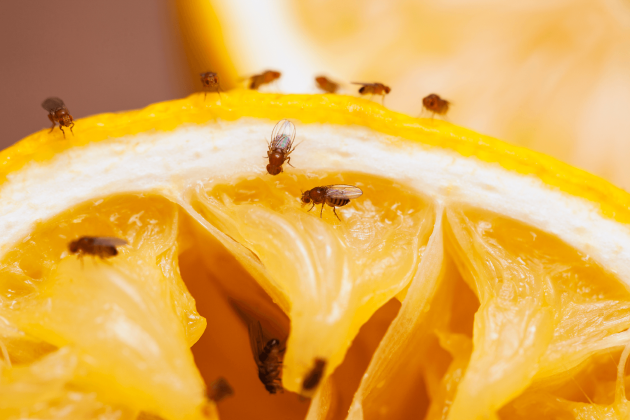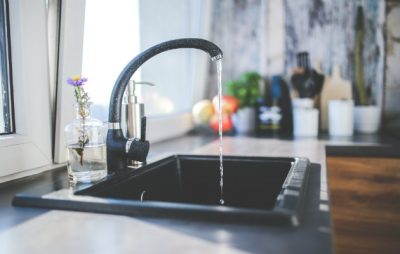Is it true that an apple a day really keeps the doctors away? We eat at least one serving of fruits and vegetables a day. So, we should already know everything about handling fruits and vegetables properly right? However, it’s often that we forget how dirty they really are. In fact, that apple in your fruit basket or your pre-washed salad leaves are real germ traps! Cleaning expert at Helpling, Roxanna Pelka, explains how to do a proper fruit and vegetable hygiene check and also listed down why even oranges and mangoes need intensive washing:
The Walking Germs: Getting onto the track of bacteria
Your fruit travel a long way before ending up in your local supermarket and into your fruit bowl. To extend its shelf-life, a toxic cocktail of pesticides are sprayed on them before coating with wax, which can cause stomach viruses or headaches and can even lead to asthma or diabetes.
Your favourite supermarket right around the corner is also another big germ trap: While you are doing your next grocery shopping, spend some time observing how the customers pick their fruits and vegetables. It is common that you will find people picking up a fruit and smelling them at close proximity or touching the fruits with their dirty hands to check the ripeness. Did you know that our own hands contain up to 4700 different types of bacteria?
Another source of magnet for bacteria and dirt: No matter how fresh you assume the fruits and vegetables are, always take note on how dirty they actually are! While you are not observing, flies are actually laying their eggs in fruit and vegetable boxes!
Strawberries, peaches, potatoes: Do they make you sick or healthy?
We all know how irresistibly plump and juicy your freshly purchased strawberries look, but we should also resist the temptation to finish them up before getting home. This is because, due to the constant threat of pests, insects and bad weather conditions when farming, fruits and vegetables are often sprayed with pesticides around 15 to 20 times per week with up to 30 different types of pesticides. Furthermore, some of them are also coated with shelf-life extending wax.
According to the Federal Office of Consumer Protection, produce such as peaches, peppers and potatoes displayed higher content of pesticides than other fruits and vegetables, making it to the Dirty Dozen list– an overview of the most dangerous contaminants and pesticide residues that can be found on fruits and vegetables.
The Rescue: How to clean your fruit properly
A simple as it sounds washing your fruits and vegetables with cold water can kill up to 98% of the bacteria. Keep it simple: 15 seconds of washing is all you need, otherwise you will damage the natural protective layer around the products and risk losing important vitamins. Another thing to take note of is to wash your fruits and veggies just right before consuming them as bacteria multiplies the most in damp surrounding.
Unsure of how to wash specific fruits or vegetables? We listed the most common produce and the techniques to clean them:
Apples and pears:
Small in size but extremely rich in antioxidants, fibre and vitamins. Did you know, that most vitamins of these fruits are embedded in the skin? Rather than removing the skin of the fruit, wash it thoroughly, making sure that you are taking in the recommended daily dose of vitamins – and stay really healthy!
Berries and grapes:
Soft fruits should be washed with care by soaking them in cold water instead of washing them under running water.
Avocado and mangoes:
Most of us are guilty of not washing fruits with tough skins and go straight to removing the skin. However, even if you don’t eat the skin of some fruits and vegetables, germs and pesticides can still have contact with the fruit pulp while peeling and cutting them via a knife or our hands. Before preparing your next fruit bowl, rinse the skin with warm water. For those who prefer using fruit soaps: In a spray bottle, mix one tablespoon of white vinegar and one of lemon juice with one cup of water. Spray the mixture on the skin of melon or similar fruits and let them soak for about 10 minutes. Then rinse the fruits under water before proceeding to peeling the skin off.
Potatoes, carrots, squash:
Firstly, with a soft brush like a toothbrush, brush away the dirt on root vegetables such as carrots. After doing so, wash the produce, peel them and then wash again – it is always best to be extra careful with fruits and vegetables on the Dirty Dozen list!
Salad:
This rule also applies to salads that claim to be “washed and ready to eat”: Pre-washed salads are often full of yeasts and mildew, which can cause gastrointestinal discomfort. Soak the lettuce in cold water to retain the minerals, then dry the leaves in a salad spinner. Extra protection: Acidic salad dressings can act as disinfectants too! In addition to pre-washing, the oil and vinegar salad dressing mixture can reduce the bacterial count on your salad to less than 1 percent!






